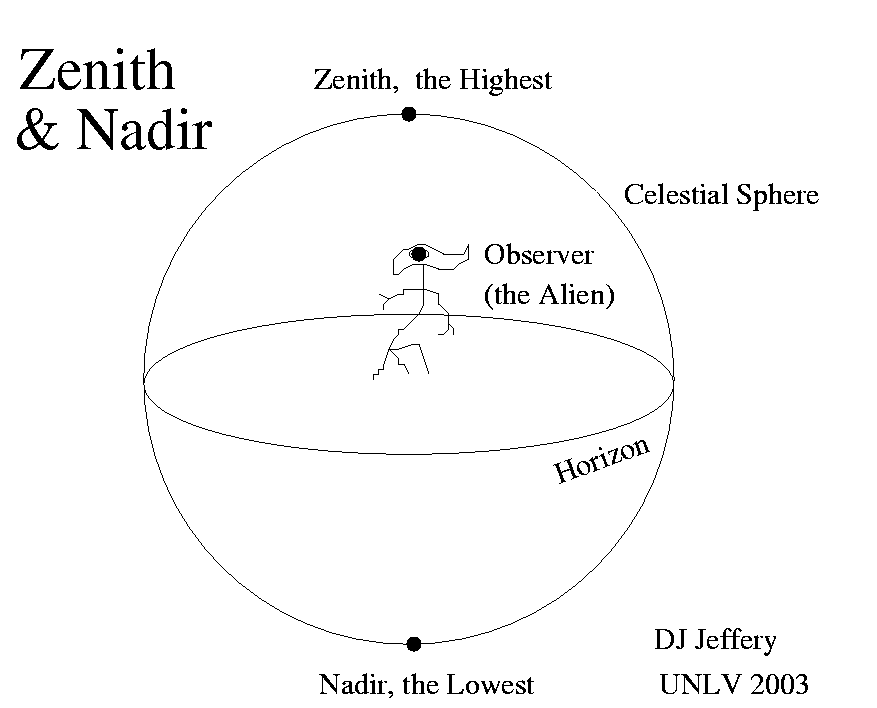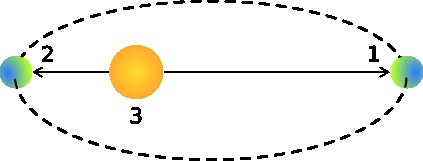Dictionary of Space Concepts
What is the Dictionary of Space Concepts?
The Dictionary of Space Concepts (DSC) is a project by UNIVERSEH – the European Space University of Earth and Humanity. Starting in 2020, this Alliance of five European Universities decided to launch an online dictionary dealing with terms and concepts related to space sciences. It should be created and used by students, lecturers, researchers and citizens alike.
After an initial planning phase, the DSC was published in spring 2022. It opens up several opportunities for all members of the UNIVERSEH Alliance and interested citizens to contribute to the content of the DSC.
In our course "Terms and Concepts of Space" (to the registration) , students learn how to write a dictionary article and later on contribute several entries to the DSC. Students and other members of the UNIVERSEH Alliance can also submit articles for the DSC via an entry in here . Interested citizens can contribute in this entry platform.
Once submitted, these articles are reviewed by UNIVERSEH Alliance staff and, if necessary, edited before their publication in the Dictionary.
In this way, the DSC is a dynamic project that is constantly expanding in content and quality through constant contributions from students, staff and citizens.
Currently sorted By last update ascending Sort chronologically: By last update
Gravity | |||||||||||
|---|---|---|---|---|---|---|---|---|---|---|---|
Image/Video/Audio: Image/Video/Audio Source: Short Definition:
Detailed Definition:
Etymology:
Sample Sentence(s):
Translations of Terms/Concepts into Partner Languages [Multiple fields for entering the translation of the term in each partner language, additional languages can potentially be added, e.g. Russian, Chinese, Portuguese] French:
German:
Polish:
Swedish:
Links to Videos/Articles:
| |||||||||||
Heliosphere | |||||||||||
|---|---|---|---|---|---|---|---|---|---|---|---|
Term/Concept: Heliosphere Image/Video/Audio: Image/Video/Audio Source: Short Definition:
Detailed Definition:
Etymology:
Sample Sentence(s):
Translations of Terms/Concepts into Partner Languages [Multiple fields for entering the translation of the term in each partner language, additional languages can potentially be added, e.g. Russian, Chinese, Portuguese] French:
German:
Polish:
Swedish:
Links to Videos/Articles:
| |||||||||||
Ilmenite | ||
|---|---|---|
Short Definition:A usually massive iron-black mineral that consists of an oxide of iron and titanium and that is a major titanium ore. Detailed Definition:Ilmenite is named after the Ilmenski mountains in Russia, where the mineral was first discovered. It is slightly magnetic, which means that magnets can be used to separate it from other minerals in sand deposits. Ilmenite is also a common accessory mineral in igneous rocks, sediments, and sedimentary rocks in many parts of the world. Also, it is a black iron-titanium oxide with a chemical composition of FeTiO3. Etymology:
Named after Ilmen Mountains in Russia + -ite in 1827. The suffix –ite is used to form nouns denoting rocks or minerals, from Latin -ītēs, and from Ancient Greek -ῑ́της. Sample Sentences:
"Ilmenite is an economically important and interesting mineral." "Ilmenite is the most important ore of titanium and the main source of titanium dioxide, which is used in paints, printing inks, fabrics, plastics, paper, sunscreen, food and cosmetics." Translations:
Links to Videos/Articles:
| ||
Orbit (entry exists but has poor description) | |||
|---|---|---|---|
Image source: Short Definition: https://www.youtube.com/watch?v=6cUe4oMk69E&list=TLGG8tIphgpDAHkxMzA0MjAyMw&t=1s | |||
Zenith | ||
|---|---|---|
Media Media Zenith & Nadir, DJ Jeffery, University of Nevada, Las Vegas, 2003. DefinitionsShort Definition Detailed Definition Etymology Sample Sentences Glowing with astral turquoise, the comet dashingly passed zenith and started decelerating as it was approaching the horizon.
Translations of Terms/Concepts into Partner Languages Frenchle zénith
German
der Zenit
Italian lo zenit
Polish zenit
Swedish zenit
Additional Translations of Terms/Concepts into Other Languages Russian Ukrainian Links to Videos/Articles: The Editors of Encyclopedia Britannica. (1998, July 20). Zenith | astronomy. Encyclopedia Britannica. Retrieved [ 06.14.2023 ], from https://www.britannica.com/science/zenith-astronomy
Zenith | COSMOS. (n.d.). Retrieved [ 06.20.2023 ], from https://astronomy.swin.edu.au/cosmos/z/Zenith | ||
Yuri Gagarin | ||
|---|---|---|
 Wikipedia Year: (n.d.) Yuri Gagarin - 1961-04-12. Wikimedia Commons. Retrieved May 29, 2023, from https://upload.wikimedia.org/wikipedia/vi/7/7f/Yurigagarin-1961-04-12.jpg
Definitions
Yuri Gagarin was a Soviet cosmonaut and the first human to travel into space. On April 12, 1961, aboard the Vostok 1 spacecraft, Gagarin completed a single orbit around the Earth, marking a significant milestone in human space exploration. His flight lasted 108 minutes and made him an international symbol of space exploration and achievement. Detailed Definition
Sample Sentence(s) 1. Gagarin's flight came at a time when the United States and the Soviet Union were competing for technological supremacy in space. David, L. Year: 2012 First Man in Space: Yuri Gagarin's Historic Vostok 1 Flight. Space.com Retrieved Date: May 29, 2023, from https://www.space.com/16159-first-man-in-space.html 2. The Gagarin crater on the Moon is named after Yuri Gagarin, in recognition of his achievement as the first human to journey into space. Translations of Terms/Concepts into Partner Languages French German Italian Polish Swedish Additional Translations of Terms/Concepts into Other Languages Russian: Юрий Гагарин Links to Videos/Articles: Britannica Year: (n.d.). Yuri Gagarin. Encyclopedia Britannica Retrieved Date: May 29, 2023, from https://www.britannica.com/biography/Yuri-Gagarin BBC News. 2021. Yuri Gagarin: The first man in space - BBC News. Retrieved Jun 12. 2024 from https://youtu.be/KANuFlelQ5k. | ||
Aphelion | ||
|---|---|---|
 Source: Vitalik1986 (2011, March 26). Perihelios-aphelion. wikimedia commons. https://commons.wikimedia.org/w/index.php?curid=14702160 Short definition: The point in the orbit of a planet or other celestial body that is farthest from the sun. Detailed Definition: Aphelion is the point in the orbit of a celestial body where it is farthest from the sun. It is the opposite of perihelion, which is the point in the orbit where the celestial body is closest to the sun. The distance between a celestial body and the sun varies during its orbit due to the elliptical shape of the orbit. The aphelion is the point where the distance is at a maximum. Etymology: aphelios - far from the sun aph - from and helion - the sun Sample Sentence(s):
"Mars reaches its aphelion in July, when it is about 250 million miles from the sun." "The aphelion of Earth's orbit occurs in July, when it is about 3.1 million miles farther from the sun than at perihelion in January." "The aphelion of Pluto's orbit is about 49.3 billion kilometres, while its perihelion is about 29.7 billion kilometres." Translations: French: aphélie German: Aphel Polish: aphelium Links to videos/articles: https://www.britannica.com/science/aphelion https://www.jpl.nasa.gov/videos/whats-up-january-2021 | ||
Ariane 5 | |||
|---|---|---|---|
 https://en.wikipedia.org/wiki/File:Ariane_5_with_James_Webb_Space_Telescope_Prelaunch_(51773093465).jpg Author: Unknown Year: (n.d.) Title: Ariane 5 with James Webb Space Telescope Prelaunch Description: Ariane 5 rocket with the James Webb Space Telescope before launch Retrieved Date: May 29, 2023, from https://en.wikipedia.org/wiki/File:Ariane_5_with_James_Webb_Space_Telesco pe_Prelaunch_(51773093465).jpg Author: Unknown Year: (n.d.) Title: Ariane 5 with James Webb Space Telescope Prelaunch Description: Ariane 5 rocket with the James Webb Space Telescope before launch Retrieved Date: May 29, 2023, from https://en.wikipedia.org/wiki/File:Ariane_5_with_James_Webb_Space_Telesco pe_Prelaunch_(51773093465).jpg Definitions Short Definition Ariane V is a heavy-lift space launch vehicle developed by the European Space Agency. It is designed to deliver payloads, including satellites and space probes, into geostationary transfer orbit. The Ariane V rocket consists of two main stages, multiple solid rocket boosters, and a cryogenic upper stage, allowing it to launch large and heavy payloads into space. Detailed Definition Ariane V is a powerful rocket designed in 2021 to send satellites and spacecraft into space. It was created by the European Space Agency, ESA and is part of a family of rockets called Ariane. The rocket has two main parts, or stages, that work together to launch the payload into space. The first stage has two powerful engines that burn solid fuel for about two minutes. After that, they detach and the second stage takes over. The second stage has a liquid fuel engine that takes the payload higher and faster until it reaches the desired orbit. Ariane V is very reliable and has been used for many different types of missions, such as launching communication satellites, Earth observation satellites, and scientific missions. Ariane V can carry very heavy payloads, which makes it a perfect choice for launching big commercial satellites. Etymology Ariane is a name that comes from Greek mythology, specifically from the story of Theseus and the Minotaur. In the story, Theseus, a Greek hero, is sent to Crete to defeat the Minotaur, a monster with the head of a bull and the body of a man. He is aided in his mission by Ariane, she gives Theseus a ball of thread to help him navigate through the maze where the Minotaur lived. With her help, Theseus was able to kill the monster and escape the maze. The name Ariane was chosen for the European Space Agency's rocket family because it represents the idea of finding a way through complex and difficult challenges, just as Theseus found his way through the labyrinth with Ariane's help. The rockets in the Ariane family are designed to help humans explore space, which is one of the most complex and challenging endeavours for humans. Sample Sentence(s) Among the many European satellites launched by Ariane have been Giotto, the probe to Halley’s Comet; Hipparcos, the stellar distance-measuring satellite; Rosetta, a comet rendezvous mission; and Envisat, a large Earth-observing satellite. Author: Britannica Year: (n.d.) Title of the article: Ariane (European launch vehicles) Title of the website or source: Encyclopedia Britannica Retrieved Date: May 29, 2023 URL: https://www.britannica.com/technology/Ariane- European-launch-vehicles The European Space Agency's Ariane V rocket was successfully launched into space, carrying a satellite that will provide internet access to remote areas. Translations of Terms/Concepts into Partner Languages: French: Ariane V German: Ariane V Italian: Ariane V Polish: Ariane V Swedish: Ariane V Additional Translations of Terms/Concepts into Other Lang... Russian: Ариан 5 Links to Videos/Articles: ● https://www.esa.int/Enabling_Support/Space_Transportation/Launch_veh icles/Ariane_5 ● https://youtu.be/UaYZieeCX68 | |||
Atmosphere | |||
|---|---|---|---|
 Source: Gatley, R. (2018, January 27). Cruising at 47000 feet over Kazakhstan. Shot with an 8mm fisheye lens.. unsplash. https://unsplash.com/photos/oxgK2f_rxDc Definition:The mass of gas that surrounds an astronomical body, such as a planet, and is held in place by the gravity of this body. Etymology:From Greek ατμός (atmos)'vapor' + σφαιρα (sphaira)'sphere' Translations:
| |||
